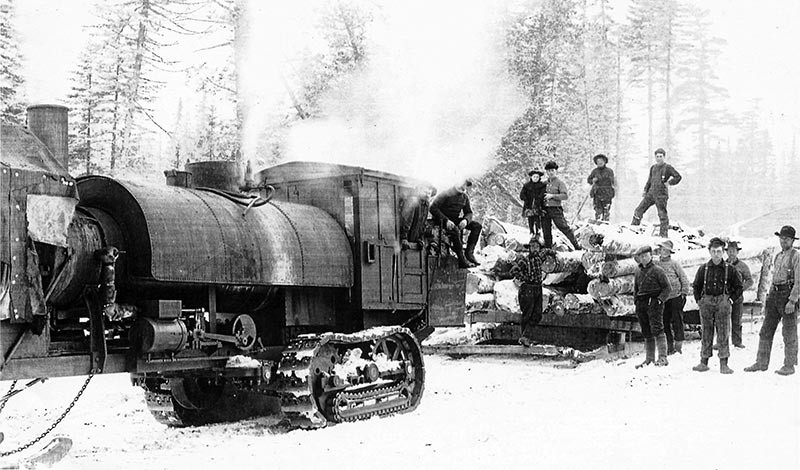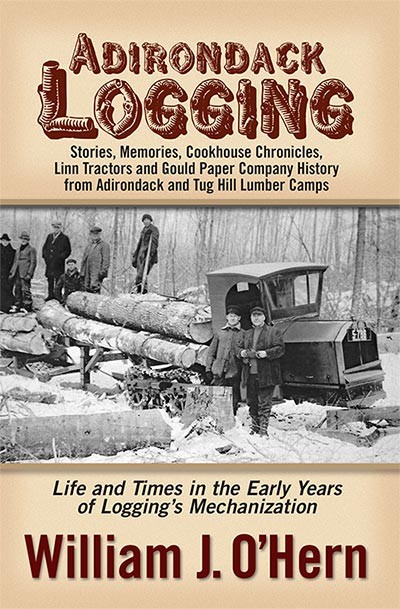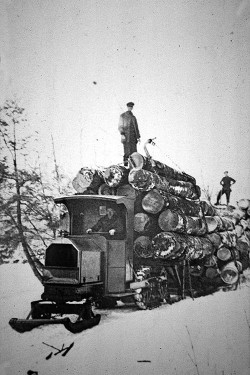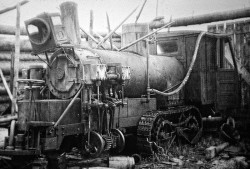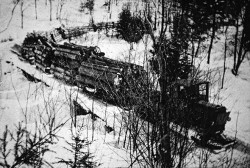There’s a lot of talk in the forest industry these days about “mechanized logging.” Some lament the passing of an era – the loss of the sounds of a revving chainsaw, a wedge being pounded, a Detroit diesel screaming to power a cable skidder. Some question whether the economics of mechanization make sense, given the high prices of feller-bunchers and forwarders and the not-so-high prices of timber, though others feel that the safety and efficiency of this new equipment makes their adoption inevitable.
This current discussion of mechanized logging would probably have amused lumbermen in the late 1800s. Back then, the feller-bunchers wore wool pants and the forwarders ran on grain and hay. It’s quite likely that they would have considered a logging operation using a 90cc chainsaw and a skidder to be pretty mechanized. Times change; tools evolve.
Whatever changes we’re witnessing in forests now are nothing compared to the true advent of mechanical logging that began right around 1900, the era when horsepower replaced horse power. “The old methods of using horses ended with the creation of ‘The Mary Anne,’ Lombard’s first power-driven steam hauler,” writes Jay O’Hern in his recent book Adirondack Logging: Life and Times in the Early Years of Logging’s Mechanization. “If the Adirondacks had bragging rights, the region could boast that one of the earliest steam haulers was used in the central Adirondacks near Inlet, New York.”
The Lombard he refers to was Alvin Orlando Lombard, a blacksmith who began cranking out mechanized logging equipment in Waterville, Maine, in 1901. Looking somewhat like a locomotive, except having tracks in back and a ski up front used to steer, Lombard’s steam haulers could pull heavy loads of logs out of the woods. However, they were expensive and large (requiring similarly expensive roads), so they were used only on large jobs.
The next big development was the introduction of smaller, gasoline-powered “tractors,” particularly the models produced by the Linn Manufacturing Corp. Linn was Mr. Holman Harry Linn, of Oneonta, New York, the owner of a traveling road show (think dogs and ponies) and a former employee of Lombard’s, who had invented a gasoline tractor propelled by tracks in the rear and guided on the road by steering runners in front.
Predictably, there were later patent disputes between Lombard and Linn, but the larger story was that the face of logging had changed forever. These mechanical creations spurred others – powered log loaders, tracked dozers, and others, all detailed and documented in O’Hern’s book. “The horse was every bit as important at the lumberjack in getting out the logs from the vast virgin softwood stands of Upstate New York,” he explains. But once mechanization took over, “its days were numbered.”


